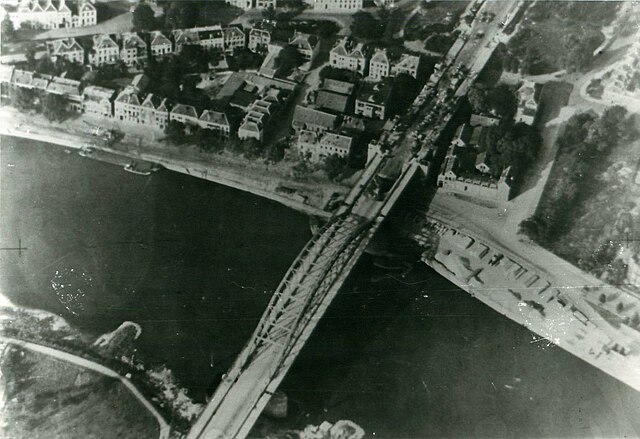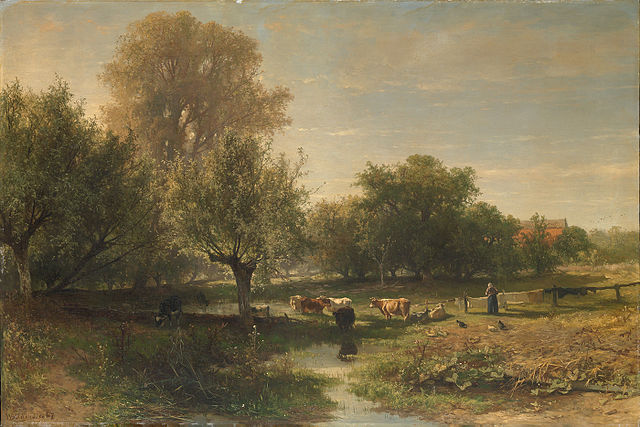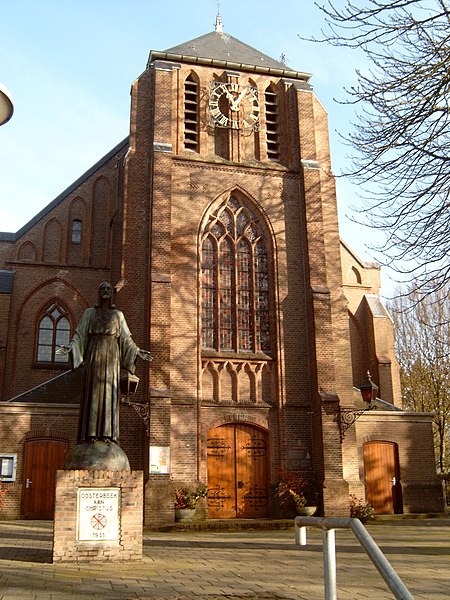The Battle of Arnhem was a battle of the Second World War at the vanguard of the Allied Operation Market Garden. It was fought in and around the Dutch city of Arnhem, the town of Oosterbeek, the villages Wolfheze and Driel and the vicinity from 17 to 26 September 1944. The Allies were poised to enter the Netherlands after sweeping through France and Belgium in the summer of 1944, after the Battle of Normandy. Operation Market Garden was proposed by Field Marshal Sir Bernard Montgomery, who favoured a single push northwards over the branches of the Lower Rhine River, allowing the British Second Army to bypass the Siegfried Line and attack the Ruhr. US Airborne troops were dropped in the Netherlands to secure bridges and towns along the line of the Allied advance. Farthest north, the British 1st Airborne Division landed at Arnhem to capture bridges across the Nederrijn, supported by men of the Glider Pilot Regiment and the 1st Polish Parachute Brigade. The British XXX Corps were expected to reach the British airborne forces in two to three days.

Aerial reconnaissance photo of the Arnhem road bridge taken by the Royal Air Force on 19 September, showing signs of the British defence on the northern ramp and wrecked German vehicles from the previous day's fighting.
Major General Roy Urquhart shortly after returning to his Divisional HQ at the Hotel Hartenstein, 19 September
German self-propelled guns of the 9th SS Panzer Division during the battle. The presence of the II SS Panzer Corps would have a significant effect on the battle.
Walter Model and Heinz Harmel
Oosterbeek is a village in the eastern part of Netherlands. It is located in the municipality of Renkum in the province of Gelderland, about 5 km (3.1 mi) west of Arnhem.
The Reformed Church (Oude Kerk (Oosterbeek) [nl])
Willem Roelofs (1867): Landscape with cattle in Oosterbeek (Gelderland province), Amsterdam Museum.
Football trainer Ronald Koeman used to live in Oosterbeek. Photo by Paul Blank.
The Roman Catholic St. Bernulphus Church (1884)





![The Reformed Church (Oude Kerk (Oosterbeek) [nl])](https://upload.wikimedia.org/wikipedia/commons/thumb/0/0c/Oude_kerk_%28PKN%29_Oosterbeek_2008.jpg/640px-Oude_kerk_%28PKN%29_Oosterbeek_2008.jpg)


